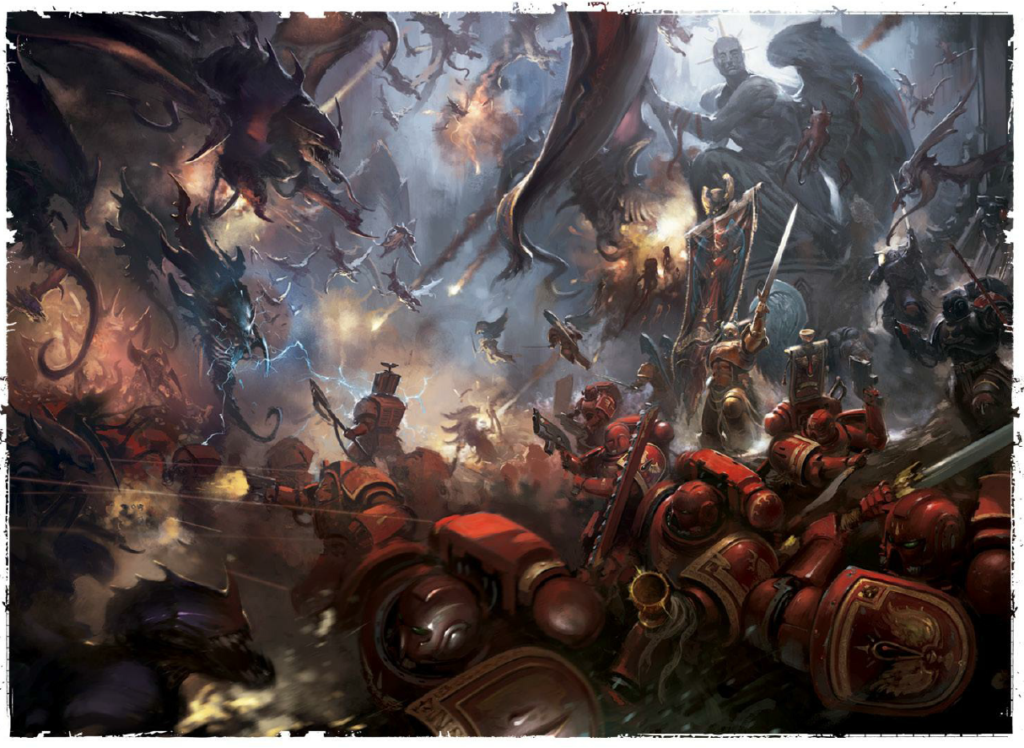
If there’s anything that gets my blood flowing (so to speak) it’s new rules for my red-armored Sons of Sanguinius, and Blood of Baal gave me an abundance of things to be happy about.
Mephiston
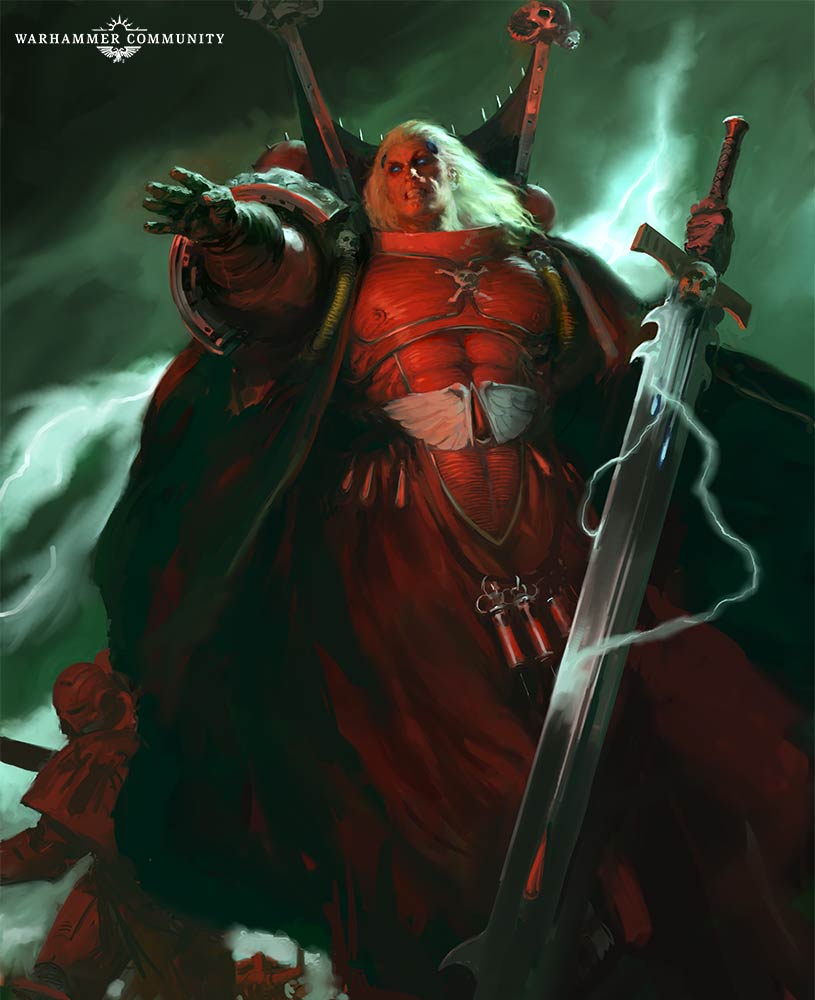
There’s not a lot of new datasheets in Blood of Baal for those hoping for new units (I have words about DC Intercessors, but that’s for another day). Most of the “new” stuff was already OK’d via FAQs for use by the glorious red chapter, such as the Phobos units and characters. I have to come out and say that Mephiston – while not exactly what the hype seemed to promise – got even better than he was with a combination of new keywords and buffed stats.
With his discount to 145, he is a shoe-in for most competitive and non-competitive lists. Smaller than a librarian dread, able to walk through walls (like infantry do), a 2+ save and a 5+++ mean that even after the Librarian Dread gets a discount and a swanky new relic, Mephiston is still a clearly viable choice. Being primaris, he won’t be riding in any drop pods, but that’s no big loss. He was (and should) normally be walking and hopping around with Wings of Sanguinius anyway.
The Red Thirst
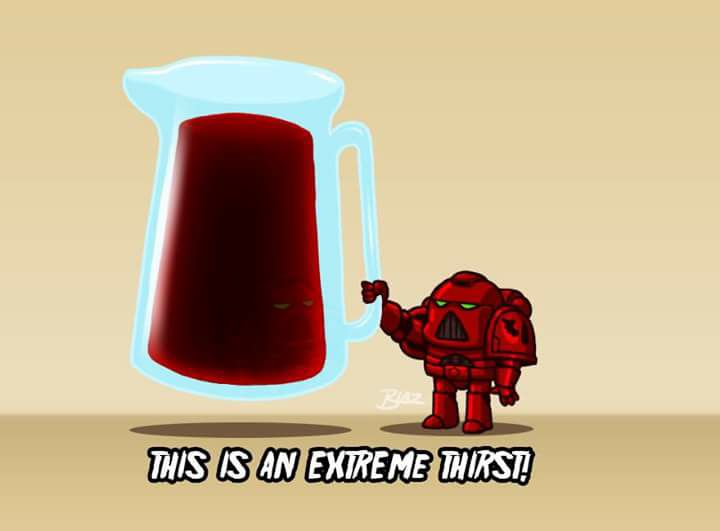
The big changes to The Red Thirst focus on improving one of the chapter’s biggest strengths and also one of its most crippling weaknesses: mobility. The +1″ bonus to movement and advance rolls is a gift from the great Angel himself, making those critical charges out of reserve more possible when you have already used Descent of Angels or are light on command points. The extra advance movement will also help if you are like me and like to advance your characters up the board to support units like Death Company that have stormed up the field via Forlorn Fury. Blood Angels have always hit hard, but have struggled to get in punching range. This will help greatly with that, but as with any dice game there are no guarantees.
Chaplains
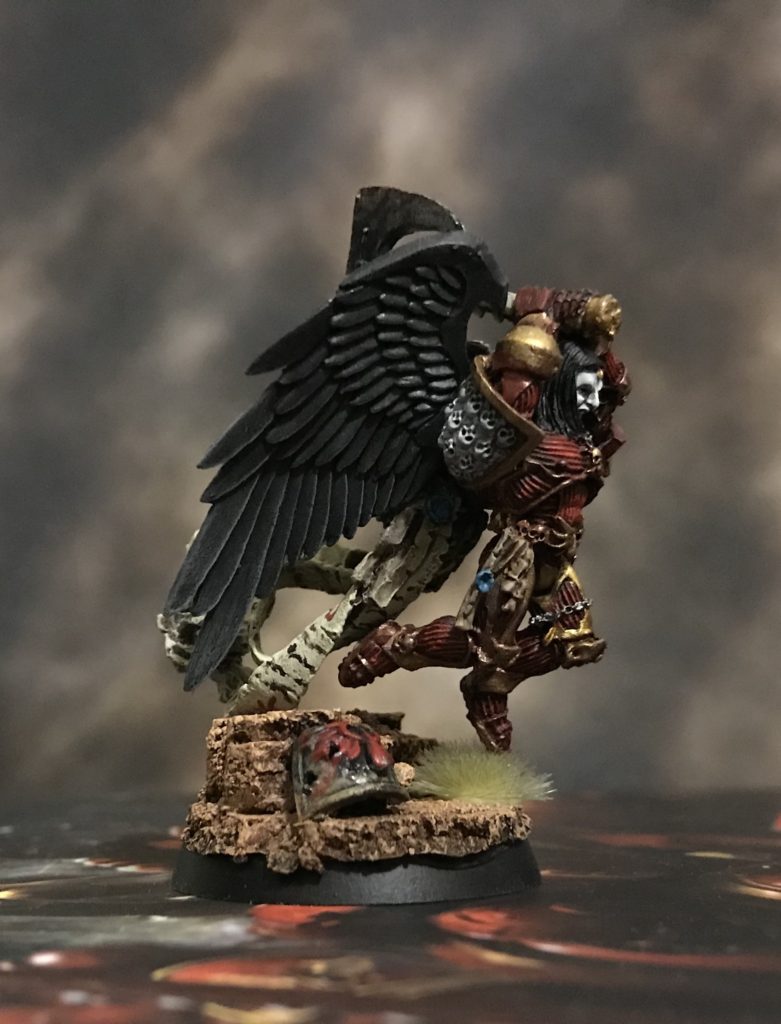
While we were light on new datasheets, the ones that were updated were fantastic, and the big winners here are the chaplains, namely Astorath and Lemartes. Chaplains have always been key part of the BA collection back from the old days of the Reclusiarchs.
Astorath knowing three Litanies of Battle and being able to use two is a HUGE deal. I already had great success using him and his Mass of Doom ability at the Rudder GT this last weekend and I can’t wait to unleash him again.
I’ll likely take Canticle of Hate and rotate between some of the other ones depending on the matchup. While it doesn’t stack with the new bonus to The Red Thirst (more on that later), the extra pile-in distance adds an incredible threat range to your assault units, especially if you’re looking to attack twice or tie up backfield shooting units. Your opponent simply won’t have the space on many deployment maps to protect from the additional 6″ you’ll be slinging your models around. The Invocation of Destruction litany looks juicy but it’ll be situational. Take it at your discretion when you’ve got boatloads of dice to throw around or some high-armor targets.
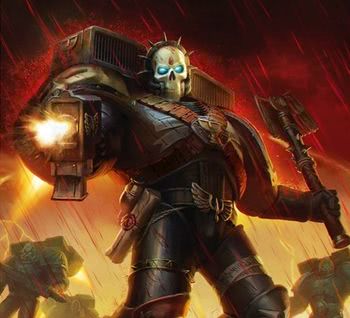
Lemartes shouldn’t be counted out. The benefit for him is that his re-roll to hit aura is always on for Death Company and doesn’t need to be rolled for like normal litanies, in addition to letting them all re-roll charge distances naturally as part of his Fury Unbound rule. Lemartes will pay off your investment in spades if you are looking to bring more than one unit of Death Company in your list. Everyone just remember to email GW and remind them that they forgot to give him the Black Rage ability on his shiny new datasheet.
Relics

There’s a lot of history in Blood Angels relics and their excellent craftsmanship. While there are definitely some relics that will fit more into open and narrative play, there are two big winners, but I am going to focus on the biggest one here.
Icon of the Angel
This relic is a game changer for deep strike assault armies that rely on multiple charges to get off. This relic let’s all Blood Angels/Successor units in the radius of its aura re-roll any of the charge distance dice. This is HUGE!
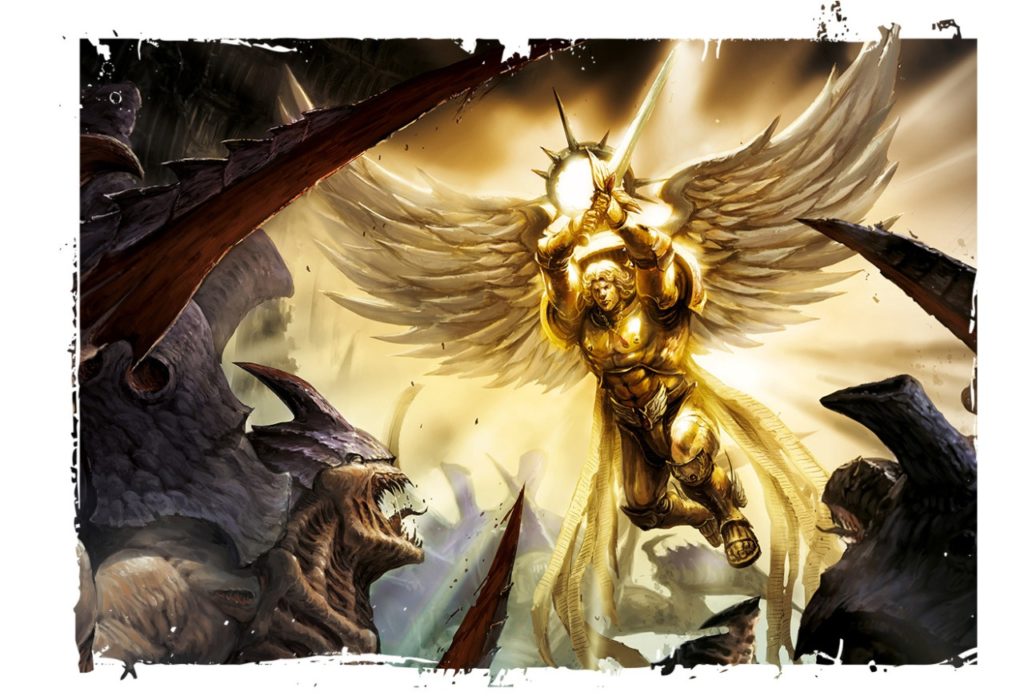
One of the big weaknesses of Blood Angels armies was the inability to get multiple units into combat when arriving from deep strike. Often, this meant burning two command points with Descent of Angels on one unit and hoping beyond hope that the other units (including your buffing characters like the Sanguinor and the Sanguinary Ancient’s banner) get lucky on the dice roll. Often I would string models behind to try to get the most out of those buffs knowing that a few models might not get to swing. Now, combined with the +1″ to charges that comes with The Red Thirst and the possibility of Canticle of Hate, this relic will vastly improve your chances of connecting even with longer charges. Better yet, with Descent of Angels, you can re-roll any of the three dice and move as far as they allow. Amazing!
While the buff range is 3″ off of a character, it isn’t hard to pull off getting many units to benefit from this excellent relic, but it will require intelligent placement. My ideal unit for this model is either a Jump Pack Sanguinary Priest (with their fancy updated datasheet) for that sweet +1 strength or a Jump Pack Librarian to cast some buffs on those he ushers into glorious combat.
More to Come…
This is just the beginning. I’ve got a whole new set of tactica I’ve been furiously scribbling and studying about here in my librarius, including my thoughts on the Death Company Intercessors, Sanguinary Guard’s newly enhanced value, how to use Phobos like a Phoboss, and more. Stay tuned, and as always, hobby well!
Cheers
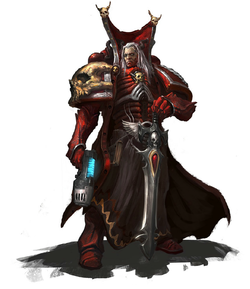
And remember, Frontline Gaming sells gaming products at a discount, every day in their webcart!

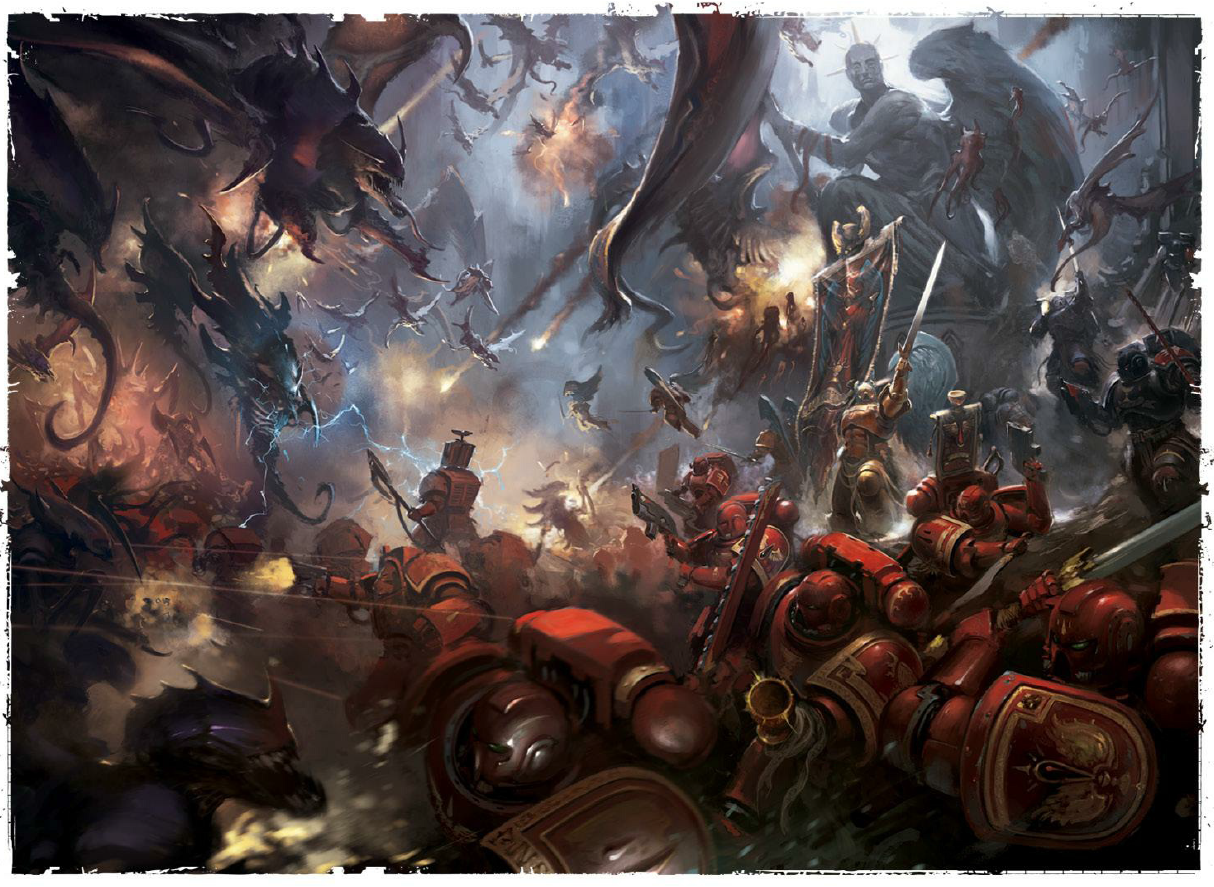


Something confuses me. Mephiston is both in Blood of Ball and Legends. How’s that work?
Presumably the Blood of Baal version (primaris) is allowed at normal events and the Legends version (shortmarine) is limited to narrative games.
Why would it be narrative, but not matched play?
Legends stuff is not recommended for organised events (irrespective of whether it’s an event organising narrative games or matched play games), but perfectly legal for open, narrative and matched play games otherwise.
Okay, if you wanna pick nits:
-Your initial sentence is grammatically incorrect, as you need to add the preposition “for” to both clauses or else it is nonsensical.
“Legends” is not recommended for any kind of use at all by Games Workshop, actually. “Warhammer Legends” (the correct name) has some recommendations attached to it, but that isn’t what you were talking about.
You failed to include the Oxford comma in your final sentence, which while not strictly incorrect is poor stylistically.
See? We can both play this game where we point out meaningless definitional flaws in the things each other are saying, but it doesn’t really take the conversation anywhere, does it? You knew exactly what I meant when I contrasted narrative games and “normal events”, but willfully misunderstanding allowed you to try and play into your weird anti-ITC fetish so good job with that I guess. If you ever wanna actually engage someone on a meaningful conversation, feel free to drop the martyr complex.
Never change Abuse. I could feel the slow drag eye roll throughout that entire post.
I don’t get the difference between matched play and tournaments some try to do. If I play to win, which is the goal of matched play, then the balance is the same as in tournament.
If something is supposedly too unbalanced or risky for tournament, it’s also the case for my casual pick up game. Perhaps more so, even.
Sure. But there are different (matched-play) tournament formats.
All of them use matched-play rules, but the optional event-recommendations are modified as recommended by GW for these recommendations. E.g. the recommended limitation on detachments and multiples of a data sheet. LVO sticks with the “vanilla” 3. Adepticon Highlander limits it to just one. No Retreat and Germany’s Ars Bellica tournament league use 2. Etc.. The variance there is not in any matched-play rules, but in the event recommendations.
Also, narrative or open play events are just as affected and included in event recommendations, because GW’s event recommendations are also there for the purpose of simplifying organisation and making admin easier when you have lots of players and many games in a tight schedule, not game balance.
Logically, if matched play is supposed to be balanced, it would be balanced with or without optional tweaks and variants like the event recommendations.
If matched play were to require people to always adopt optional event recommendations, which GW in turn recommends TOs to modify and tweak, how’d people know which recommendations to adopt to get the correct balance?